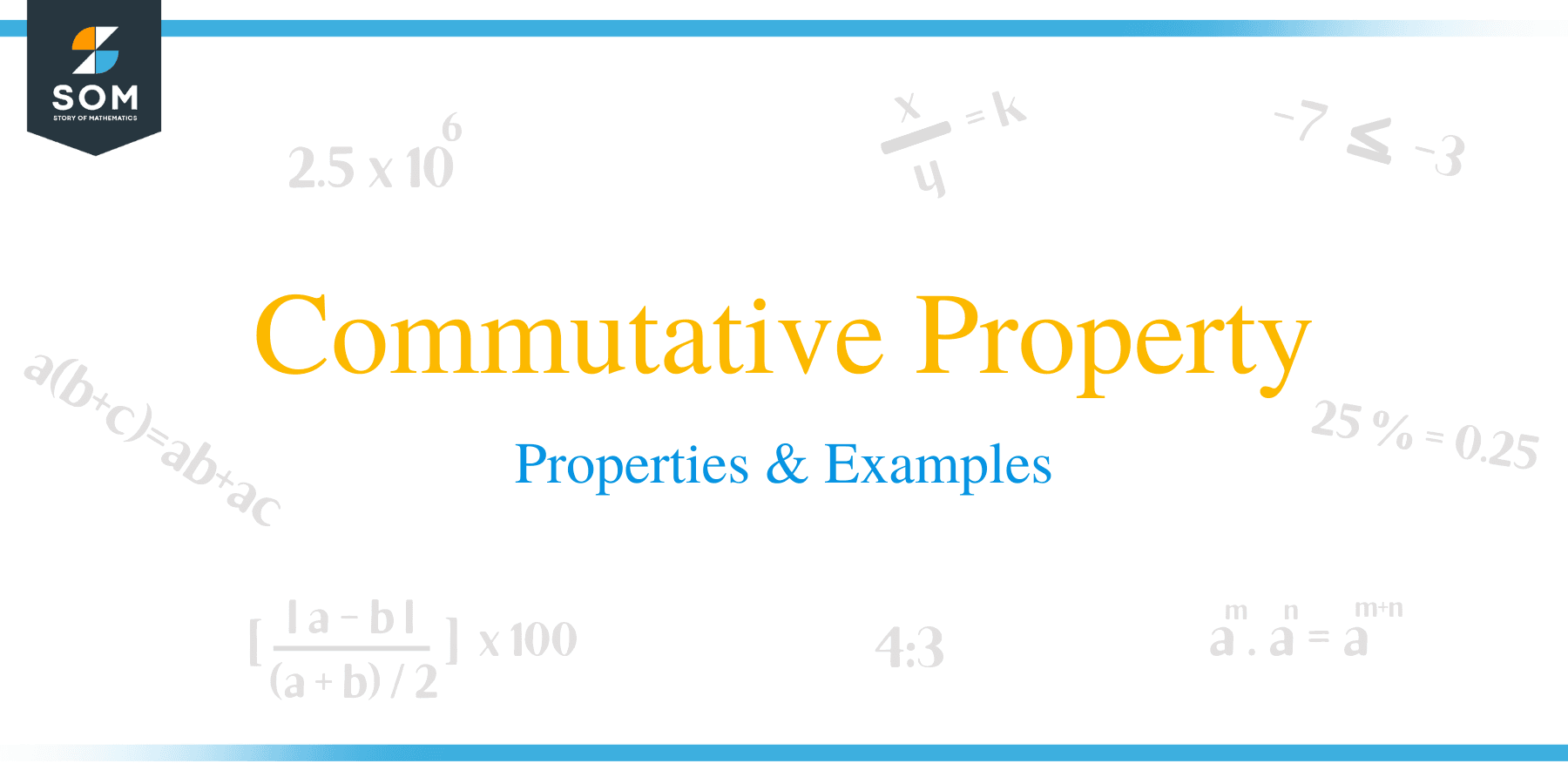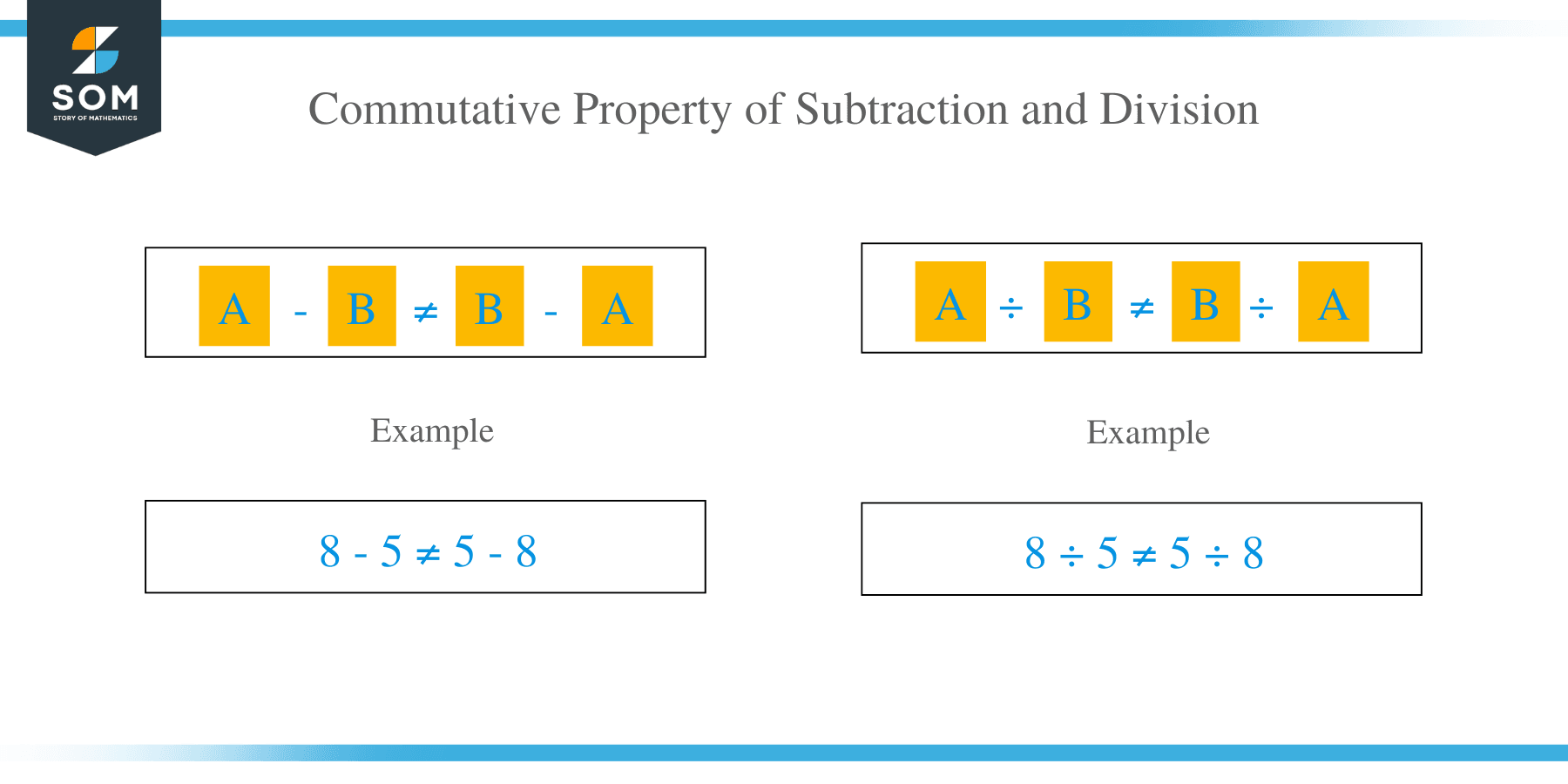- Home
- >
- Commutative Property
JUMP TO TOPIC
Commutative Property – Properties & Examples
 The word ‘commutative’ is taken from the French word ‘commute,’ which means move around. For the numbers or variables to hold the commutative property, they can move around (within an expression) like a commuter and give the same result when a particular operation is applied to them. Since ancient times, the commutative property was known, but mathematicians started using it at the end of the 18th century.
The word ‘commutative’ is taken from the French word ‘commute,’ which means move around. For the numbers or variables to hold the commutative property, they can move around (within an expression) like a commuter and give the same result when a particular operation is applied to them. Since ancient times, the commutative property was known, but mathematicians started using it at the end of the 18th century.
The commutative property is related to binary operations and functions. If the two elements follow the commutative property under some operation, they are said to be commuted under that particular operation.
What is Commutative Property?
If changing the order of the numbers does not change the result in a certain mathematical expression, then the operation is commutative. Only addition and multiplication are commutative, while subtraction and division are noncommutative.
Commutative Property of Addition
According to the commutative property of addition, if the numbers are added in any order, the result is the same. Suppose that if the number a is added to the number b, and the result is equal to some number p, then if we interchange the positions of a and b, the result is still equal to p i.e.
a + b = b + a = p
The numbers a and b are called addends.
This property also works for more than two numbers i.e.
a + b + c + d = d + c + b + a
Example 1
Show that the following numbers obey the commutative property of addition:
2, 4, 6, and 9
2 + 4 + 6 + 9 = 21
9 + 6 + 4 + 2 = 21
The result is same in both cases. Hence,
2 + 4 + 6 + 9 = 9 + 6 + 4 + 2
The real-life example is that if you want to conduct a survey in your society regarding the number of children in each house, you can start from any house and count the number of children in every house and total them. The order of house is not important here.
The other real-life examples are wearing pair of gloves, pair of shoes, and pair of socks are examples of commutative property.
Commutative Property of Multiplication
According to the commutative property of multiplication, if the numbers are multiplied in any order, the result is the same. Suppose that if the number a is multiplied with the number b, and the result is equal to some number q, then if we interchange the positions of a and b, the result is still equal to q i.e.
a × b = b × a = q
This property also works for more than two numbers i.e.
a × b × c × d = d × c × b × a
Compositions of functions and matrix multiplication are also not commutative.
Example 2
Show that the following numbers obey the commutative property of multiplication:
2, 4, 6, and 9
2 × 4 × 6 × 9 = 432
9 × 6 × 4 × 2 = 432
The result is the same in both cases. Hence,
2 × 4 × 6 × 9 = 9 × 6 × 4 × 2
Why Subtraction and Division are Noncommutative?
 To understand why subtraction and division do not follow the commutative rule, follow the examples below.
To understand why subtraction and division do not follow the commutative rule, follow the examples below.
Example 3
State whether the following expression is true.
a – b = b – a
- Step 1: What you need to show?
a – b = b – a
- Step 2: Take the left-hand side and try to prove it equal to the right-hand side.
a – b
- Step 3: Take -1 common.
–1 (– a + b) = – (– a + b)
- Step 4: Reverse the addends.
– (b – a)
- Step 5: See if you get the desired result.
a – b = – (b – a)
- Step 6: State your findings.
Since,
a – b = – (b – a)
Hence,
a – b ≠ b – a
Therefore, the given expression is false and does not follow the commutative property.
Example 4
State whether the following expression is true.
2a ÷ a = a ÷ 2a
- Step 1: What you need to show?
2a ÷ a = a ÷ 2a
- Step 2: Take the left-hand side.
2a ÷ a
- Step 3: Solve.
2a ÷ a = 2
- Step 4: Solve the right-hand side now.
a ÷ 2a = 1/2
- Step 5: State your findings.
Since,
2a ÷ a = 2
a ÷ 2a = 1/2
Hence,
2a ÷ a ≠ a ÷ 2a
Therefore, the given expression is false and does not follow the commutative property.
